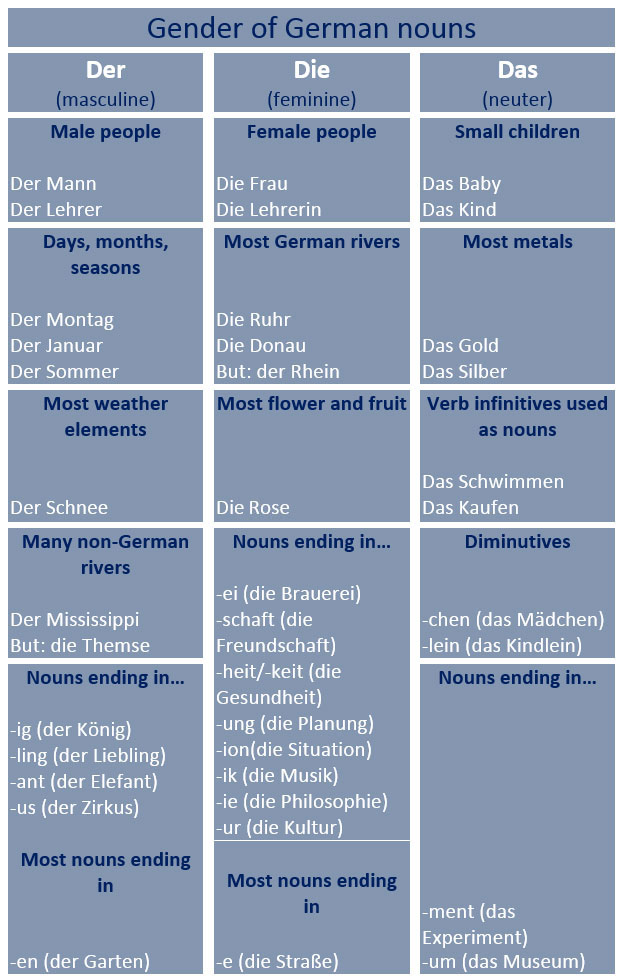Nouns and Articles
Unlike English, every noun in the German language has a gender. They can either be feminine (die), masculine (der), or neutral (das).It is crucial to know what gender goes with what noun because if you use the word "the" (der, die, das) in a sentence, you must use the proper article for the noun.
Example: Since cat(Katze) is feminine, you would use "die" in place of "the".
The cat is pretty.
Die Katze ist schön.
There are some hints to whether a noun is masculine, feminine, or neutral. Most of the time, if a noun ends with "-e", then the noun is feminine. If a noun ends with "-er", then the noun is masculine. If a noun ends with "-en", the the noun is neutral.

The same rules apply for the word "a" (ein, eine). Masculine and neurtral are "ein", feminine is "eine".
Example: Since cat(Katze) is femine, you would use "eine" in place of "a".
I have a cat.
Ich habe eine Katze.
The articles of the nouns change when their case changes. For more on how to identify cases and when to change the article, click here!
The chart for the endings of articles when cases change is below.
| Noun | Subject | Direct Object | Indirect Object |
|---|---|---|---|
| der | |||
| die | |||
| das | |||
| die (plural) |
SOURCES: http://www.nthuleen.com/teach/grammar/nomakkdatexpl.html
https://jakubmarian.com/how-to-recognize-gender-in-german-using-endings/